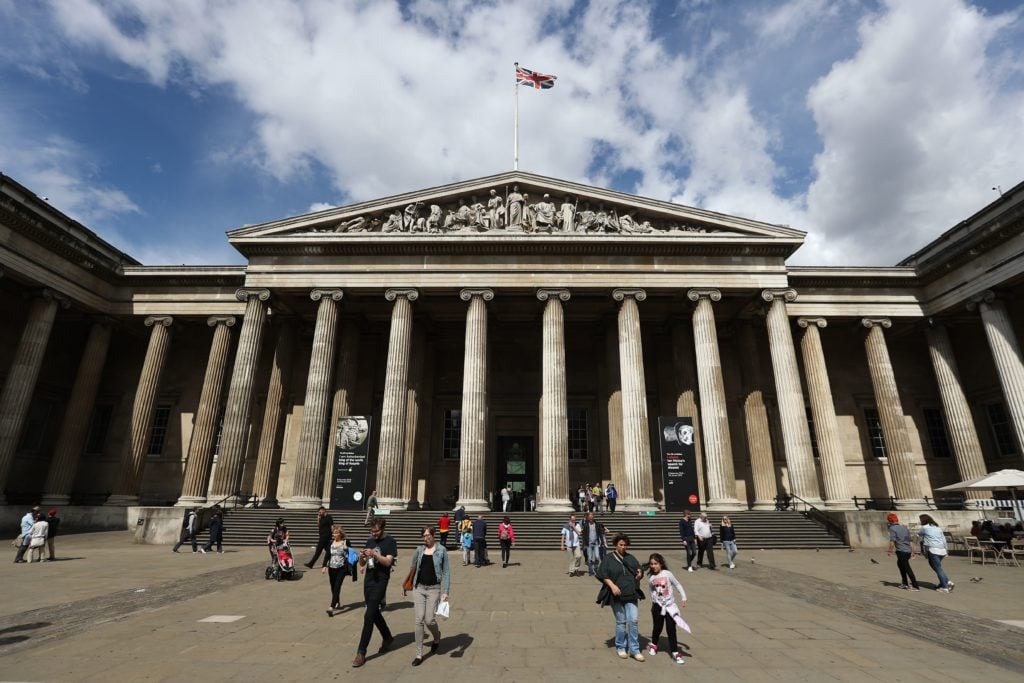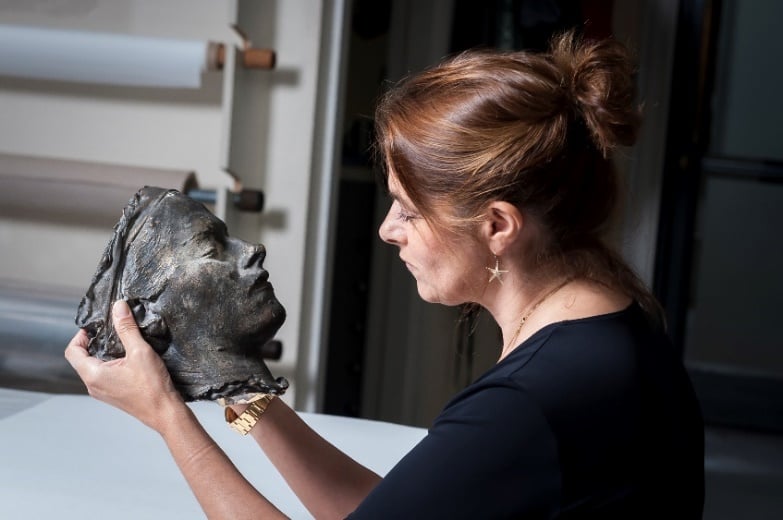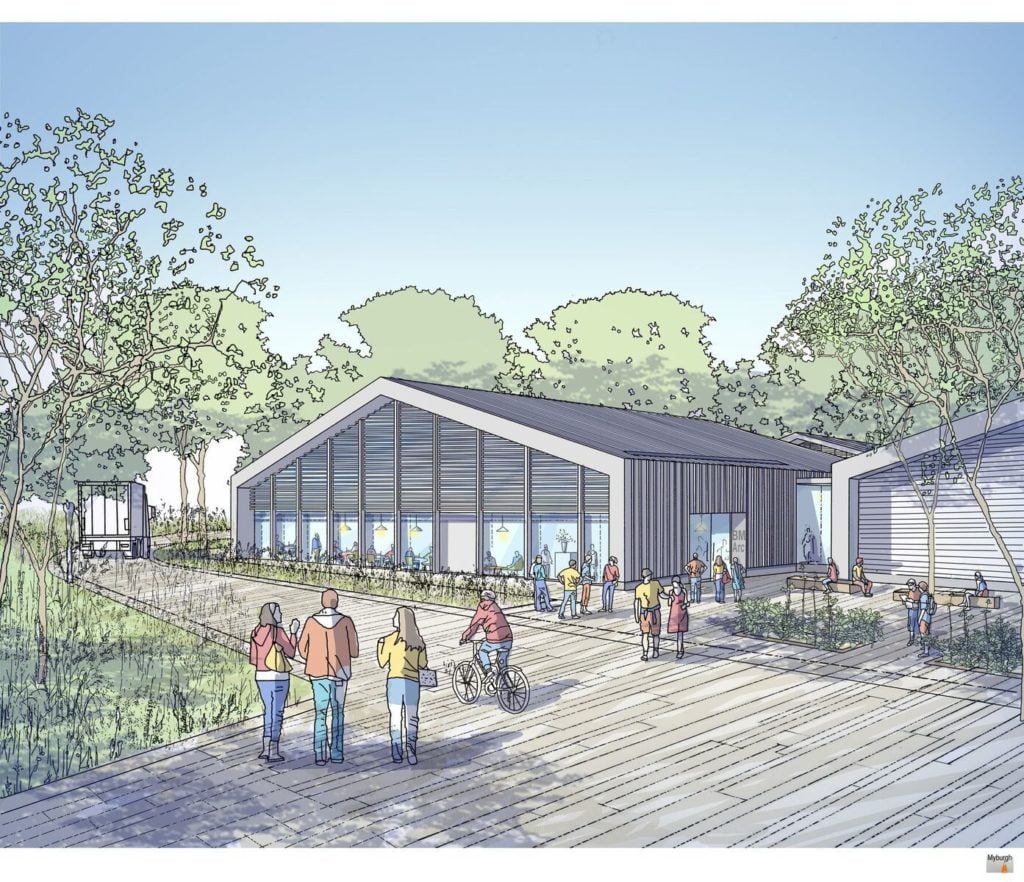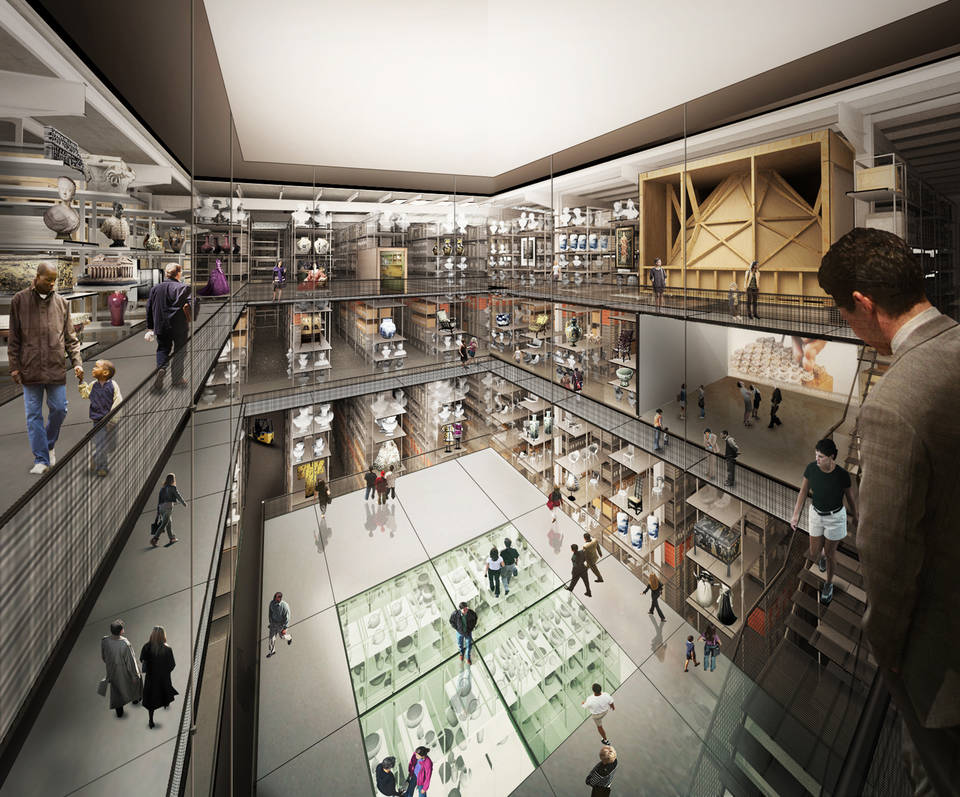Art World
Art Loans Boost Britain’s International Influence. So Why Are Three Major UK Museums Putting Them on Hold?
The British Museum and the V&A are among the museums that are halting or cutting back loans.

The British Museum and the V&A are among the museums that are halting or cutting back loans.

Javier Pes

One of the first things the UK’s new arts minister, Rebecca Pow, did upon taking office this month was to congratulate the country’s national museums for lending thousands of artworks to institutions at home and abroad. Museums lending, she said, was Britain’s “soft power at its best.”
That power looks set to diminish just as Brexit makes it more important than ever.
In the months to come, loans will be drastically cut back at three major national institutions: the Victoria & Albert Museum, which is about to impose a lengthy loan freeze affecting a swathe of its stored collections; the Science Museum, which began a loan moratorium in April; and the British Museum, which is planning to introduce a partial moratorium as well, artnet News has learned. The Museum of London will also be refusing loan requests from the summer of 2020 during its move to a new home.
The V&A is warning would-be borrowers that large parts of its collection will be unavailable for exhibitions from January 2020 until March 2024. The Science Museum says it will begin lending objects again in January 2023. And the British Museum—which will continue to consider loan requests “on a case-by-case basis, and will continue to lend widely,” according to a spokesperson—will nevertheless reduce its loan operations.
In sum, these changes mean that the public and hundreds of researchers will not have access to thousands of stored objects for years.

Tracey Emin with her Death Mask (2002) at the National Portrait Gallery’s Conservation Studio. Courtesy of Tracey Emin and the NPG.
The reason for all this? Since the 1980s, the three museums have shared Blythe House—a jointly operated facility in a Victorian-era former postal building in West London—to store their collections. But now, as the government prepares to sell the building, the institutions must remove their objects, and the space must be emptied out by 2023. The Museum of London has had a store and research center in London since the 1990s. Its loan freeze is due to the museum’s move to a new home, which is due to open in 2023.
A V&A spokesperson describes the collection move as “the biggest in its history.” Hundreds of thousands of objects, books, and archives will be “audited, studied, photographed, conserved, packed, and transported across London, which will mean we are unable to loan objects currently stored at Blythe House.” She adds that “the majority of the V&A’s loans activity will remain unaffected.”
In the meantime, for the next three to four years, it will be mainly up to the Tate, National Gallery, and National Portrait Gallery to do the heavy lifting when it comes to lending works internationally and across the UK.
They already handle hundreds of requests. Next year, the National Gallery is due to lend an unprecedented number of masterpiece paintings for a touring exhibition in Japan. In 2021, the Tate is due to send works for the inaugural exhibition at Shanghai’s Pudong Museum of Art, which is part of a long-term partnership deal.
Closer to home, the National Portrait Gallery is lending 50 portraits to museums and institutions in famous sitters’ home towns across the UK. Among the “Coming Home” loans is Tracey Emin’s bronze Death Mask (2002), which is now on show at Margate Library in the South of England.
The sale of Blythe House, however, will offer some advantages to the V&A, the Science Museum, and the British Museum, including a £150 million ($182 million) windfall, which each institution is using to build new (or upgrade existing) storage buildings.

A sketch of the BM Arc collection store and research center, which is due to open in 2023. Courtesy of the British Museum.
All three UK institutions stress that in the long term, access to the collections for the general public and specialist researchers will be improved.
The British Museum is building a £64 million mega-store around 40 miles west of London in a partnership with the University of Reading. Called the BM Arc and designed by architects John McAslan & Partners, it will house the museum’s huge reserves of archaeological objects, ancient sculptures, mosaics, and historic cast collections. A much larger part of the building will be open to the public than was accessible at Blythe House.
Elsewhere, the Science Museum is expanding its existing store at a former air field near the town of Swindon. A spokesman says that its National Collections Center, which is under construction, will “revolutionize” public access. He says that items in its global touring program will not be affected during the moratorium.
The V&A’s storage plans are the most architecturally ambitious of the three institutions.
It is creating two venues in East London at Queen Elizabeth Park, home of the 2012 Olympic stadium. The bulk of the collection will be housed in the V&A East Collection and Research Centre, an “open store” designed by leading US architects Diller Scofidio + Renfro.
Highlights that will be on view to the public will include Frank Lloyd Wright’s 1930s office for Edgar J Kaufmann Jr., plus collections of fashions, textiles, furniture, and other objects. Meanwhile, the V&A East museum, designed by architects O’Donnell + Tuomey, will include an element of open-access storage, plus two exhibition spaces that will also host shows organized by the Smithsonian Institution.

View of the collection hall in the planned V&A East Collection and Research Center. Copyright Diller Scofidio + Renfro, 2018.
The Museum of London, which stopped answering curatorial enquirers even by email this summer, is moving to a new home in a former meat market in Smithfields, central London. While it will respond to researchers in the fall, loan requests will not be considered until after the new museum opens, possibly in 2023.
Some experts say the length of the loan freeze is a reflection not only of the logistical challenges of the Blythe House project, but also of modern museum management.
The broadcaster and art historian Bendor Grosvenor, who has tracked down lost masterpieces in Britain’s stored collections for a popular BBC TV series, calls the V&A’s loan freeze unfortunate, but not surprising.
“In major museums, it now takes an age to move—and even arrange to look at—objects in storage,” he says. Small tasks, which until recently might have been done by a curator, now require a small team. “As a result, excessive institutional time is spent on internal processes,” he says. “There’s an inverse rule between the size of a museum and the speed with which it operates. The V&A has become one of the slowest.”
A spokesperson for UK’s Department for Digital, Culture, Media and Sport says the sale of the Blythe House will eventually allow the museums to open up more of their collections to the public and to researchers.
“During this process there will be a short-term impact on the museums’ ability to loan certain items,” she says, adding that the government is working closely with the museums “to ensure disruption is kept to a minimum.”